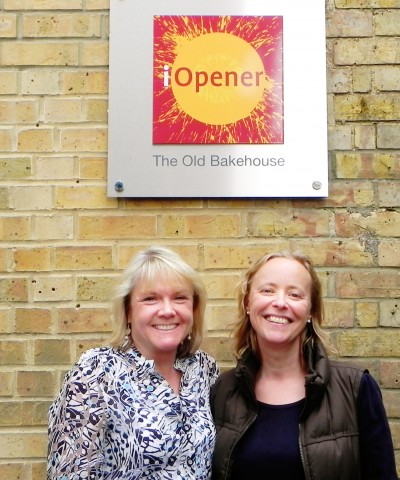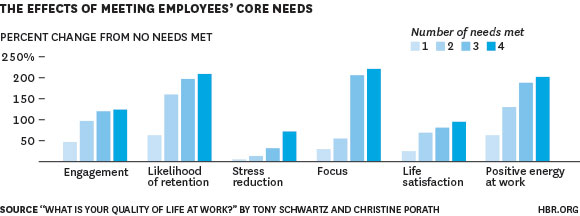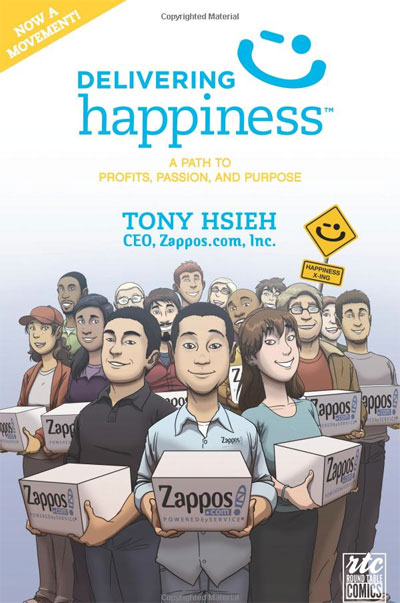
Chris Cook, CEO of Capiche, and Jessica Pryce-Jones, founder of iOpener, in Oxford this summer. Chris is a licensed practitioner of iOpener Institute for People and Performance.
For the second year in a row, the Wall Street Journal’s blog, The Source, has teamed up with the iOpener Institute for People and Performance to find out how happy and fulfilled readers of the Wall Street Journal are at work. The institute has designed a survey to help you establish how happy you are at work. Using the article below as a guide, you can figure out how to increase your happiness and be more productive. Complete the questionnaire now.
What in the world is happening in the workplace? Jessica Pryce-Jones, founder of iOpener Institute for People and Performance, shares this report.
Economic data over the last couple of years shows a confusing picture of productivity. The US reported a modest increase due to downwards wage pressure, while the UK—outperformed by France and Germany—has reported more employment but less output.
South African productivity has hit a 46-year low, while even China and India—which have been fueling their economies with cheap labor—are seeing costs rise as investors eye up cheaper countries or territories in which it’s easier to do business.
Productivity is a combination of many things: traditionally, it includes investment, innovation, skills, enterprise and competition. But there’s one key ingredient missing here.
The happiness of employees.
Employees who are the most productive are also the happiest at work.
We know this because the institute has been gathering data since 2005, and that data tells us that when you are unhappy or insecure at work, you withhold your best effort. You are simply less productive when you’re looking to balance the psychological contract between you and your employer, which is the reason it matters for both bosses and employees.
So where are you? If you want to assess what’s affecting your performance, complete our questionnaire to get a personalized mini-report.
What do we know about employees who are happiest at work? Our research tells us they are:
- Twice as productive
- Stay 5 times longer in their jobs
- 6 times more energized
- Take 10 times less sick leave
And we’ve found other benefits.
Happier workers help their colleagues 33% more than their least happy colleagues, raise issues that affect performance 46% more, achieve their goals 31% more and are 36% more motivated.
If there’s a positive effect, they demonstrate it. Every organization needs happy employees because they are the ones who effectively tackle the tough stuff and turn ideas into actions.
So what should organizations, bosses and individuals do? Our research show everyone needs to focus on the five drivers of individual productivity because they propel performance and ensure employees are happy in their work, too.
Driver 1: Effort
This is about what you do. You’ll never be productive without clear goals or precise and well-articulated objectives that lead to those goals without addressing problems that arise on the way. That means the ability to raise issues and have others help you solve them. That’s what leaders need to make happen and what employees need to push for.
Constructive feedback helps you contribute even more, while personal appreciation goes a long way toward boosting productivity. Interestingly, negative feedback that is poorly given doubles sick leave, according to our data, and increased sick leave of course affects productivity levels. So one practical thing organizations can do is teach their managers how to give great feedback.
Driver 2: Short-Term Motivation
 This is about staying resilient and motivated enough to maintain productivity levels. Our data shows resilience hasn’t taken a knock over the past few years, but motivation has. It dropped by 23% during 2010 and climbed back by 17% during 2011, but there has been no improvement in 2012.
This is about staying resilient and motivated enough to maintain productivity levels. Our data shows resilience hasn’t taken a knock over the past few years, but motivation has. It dropped by 23% during 2010 and climbed back by 17% during 2011, but there has been no improvement in 2012.
Of course, reduced motivation means it’s harder to maintain high performance and maximize output.
Good organizations encourage motivation by helping employees own issues and take responsibility. And they do that at a level that fits with an individual’s skills, strengths and expertise levels. Those employees are encouraged to work on what they are good at, prioritize what they do and build efficiencies into their work.
Driver 3: How Well You Fit into a Firm
Performance and happiness at work are both boosted when employees feel they fit within their organizational culture. Believing you’re in the wrong job, feeling disconnected from the values of your workplace or disliking your colleagues is dispiriting and de-energizing, and all of that feels much worse if decisions in your workplace feel unfair.
Our investigation of fairness at work doesn’t tell a good story. It tumbled 19% in 2010, rose 9% during 2011 and has been flatlining during 2012. According to the UK’s Chartered Institute for Personnel and Development, fairness is connected with discretionary effort: if decisions feel fair, work gets done. If they don’t, employees look for other ways of getting what’s missing, which is when equipment gets broken, work gets sabotaged and things go missing.
Good firms can address this by being as transparent as possible about why decisions are made, explaining why resources are allocated in the way they are and making sure that their approach is as equitable as possible.
Driver 4: Long-Term Engagement
This is about commitment and the long-term engagement you have with what you do and your organization. Having to work hard in a job you feel stuck in is energy-draining at best and, as we’ve found, associated with higher illness at worst.
Our data reveals one of the key items that creates commitment is a belief that you’re doing something worthwhile. And this is particularly important to Generation Y (born in the early 1980s). If your digital natives (those familiar with digital media and technology) don’t feel they are doing something worthwhile, they’ll be eyeing the exit and intending to leave within two years. Our numbers clearly tell us money won’t solve this problem.
More than any other generation, members of Generation Y need to believe in the strategic direction their employer is pursuing. The more Generation Y’ers believe in the leadership’s corporate strategy, the less likely they are to leave.
This tells employers they need to regularly and convincingly communicate the corporate strategy, along with providing tangible proof of how that strategy is being implemented and the contribution it is making—not just to the bottom line.
 Driver 5: Self-Belief
Driver 5: Self-Belief
If you’re not confident, you won’t make decisions, take risks or spend cash. Confidence is the gateway to productivity, and our data shows a primary indicator of confidence is that things get done. We also found things get done better, faster or cheaper because people are confident of the outcome.
Right now, confidence has a significantly lower average than the other four drivers, and that’s a problem because you can’t have confident organizations without confident individuals.
And productivity works in the exactly the same way.
When we collect data, we ask employees how much time they spend “on task” or engaged with their work. This ranges from 78% for those who are most on task to 41% for the least.
Just to be clear, the people who are most on task also have the highest levels of all the five drivers as well as being the happiest employees at work. In real terms, that 78% is equivalent to about four days a week while 41% is just two days a week. This represents a huge productivity cost to any organization.
In effect, an organization is losing about 100 days of work a year for every “unhappy” employee.
If leaders, organizations and industries want to manage productivity and move it in the right direction, it’s time to understand these five drivers, investigate the numbers and recognize the serious outcomes happiness at work can bring.
For the second year running, the Wall Street Journal (Europe) is running a global happiness at work index in conjunction with the iOpener Institute to see who’s happiest at work. If you want to take part, click here to get a self-assessment. We will be reporting back on the results of readers clicking through in six weeks.
Are you less happy than you would like to be? Chris Cook, CEO of Capiche, can help with one-on-one coaching and team workshops. Email her at chris@capiche.us or call 541.601.0114.






 Along with trusted colleague John Bowling of
Along with trusted colleague John Bowling of  With support from the Board of Directors and management team, these solutions are in the process of being implemented. This process is fully aligned with the Co-op’s mission and vision, which includes “joyfully working together, providing a workplace that fosters opportunities for participation, empowerment and growth in an environment of mutual respect and cooperation.”
With support from the Board of Directors and management team, these solutions are in the process of being implemented. This process is fully aligned with the Co-op’s mission and vision, which includes “joyfully working together, providing a workplace that fosters opportunities for participation, empowerment and growth in an environment of mutual respect and cooperation.”
 This is about staying resilient and motivated enough to maintain productivity levels. Our data shows resilience hasn’t taken a knock over the past few years, but motivation has. It dropped by 23% during 2010 and climbed back by 17% during 2011, but there has been no improvement in 2012.
This is about staying resilient and motivated enough to maintain productivity levels. Our data shows resilience hasn’t taken a knock over the past few years, but motivation has. It dropped by 23% during 2010 and climbed back by 17% during 2011, but there has been no improvement in 2012. Driver 5: Self-Belief
Driver 5: Self-Belief




